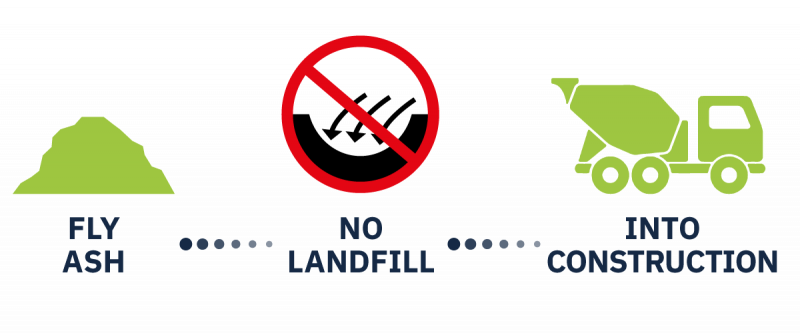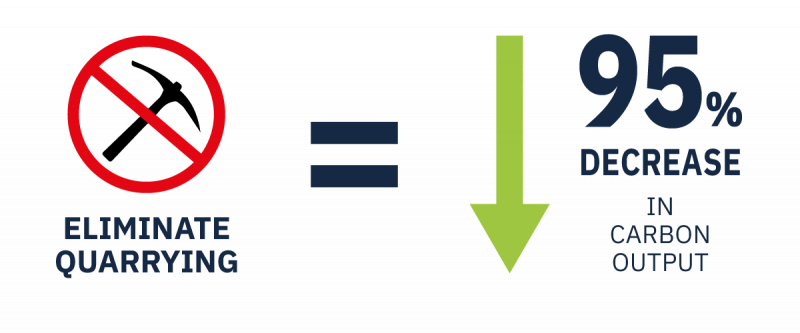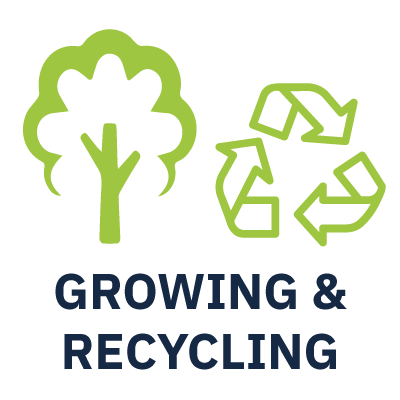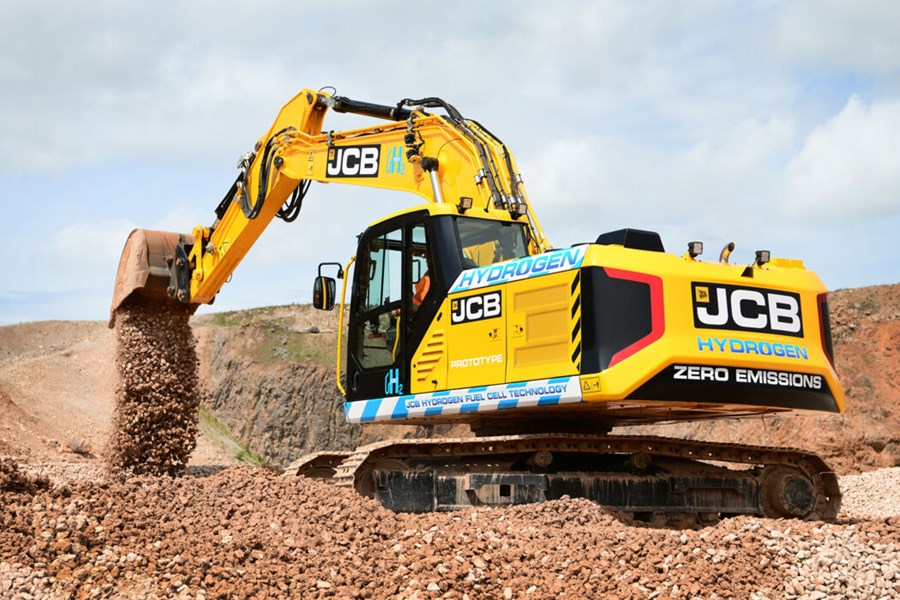Loading...
At CMT we understand the importance of sustainable construction materials and machinery, certainly for our customers' projects and builds. Therefore, we've gathered all the key need-to-know terms and what they mean so that you can become an expert in next-to-no-time.


 By repurposing materials that would otherwise go to waste, CEM II eliminates a large portion of the production process of classic cement that has significant carbon output.
By repurposing materials that would otherwise go to waste, CEM II eliminates a large portion of the production process of classic cement that has significant carbon output.
 Two further approaches to reducing the carbon output of the cement industry have been thought up by Solidia. Their rethinking of the cement production process sees different ratios and temperatures used to reduce emissions and cut down production time too.
Unfortunately, many of these ideas are part of a small movement rather than something becoming a widespread replacement for Portland cement. However, they do demonstrate an exciting potential for the future of this essential building material.
Solidia is gaining traction with its innovative cement process.
Two further approaches to reducing the carbon output of the cement industry have been thought up by Solidia. Their rethinking of the cement production process sees different ratios and temperatures used to reduce emissions and cut down production time too.
Unfortunately, many of these ideas are part of a small movement rather than something becoming a widespread replacement for Portland cement. However, they do demonstrate an exciting potential for the future of this essential building material.
Solidia is gaining traction with its innovative cement process.







 JCB has developed the construction industry’s first ever hydrogen powered excavator as it continues to lead the sector on zero and low carbon technologies[/caption]
For example, several companies are switching out gas-guzzling vehicles and machinery for electric-powered alternatives. The number of electric-powered cranes will grow across the globe.
JCB has developed the construction industry’s first ever hydrogen powered excavator as it continues to lead the sector on zero and low carbon technologies[/caption]
For example, several companies are switching out gas-guzzling vehicles and machinery for electric-powered alternatives. The number of electric-powered cranes will grow across the globe.
Sustainable Construction Materials & Machinery
When considering the environmental sustainability of a build, first thoughts are often: “How will my completed project function sustainably when in use?” However, this view of sustainability can miss the long process of construction. Sustainability must start with the process of creation. There's considerations to be made to ensure your construction process of a project matches the sustainability of the finished project. A superior, sustainable construction process will ensure that both materials acquired and processes used are as green as possible. In Part II of our three-part series, we’ll take you through:Sustainable Construction Materials
- Cement & Concrete
- CEM
- GGBS
- Solida’s leading example
- Alternative Brick Materials
- The K-Bric
- Timber
- Compliance with national regulations
- Compliance with certification schemes
- Intelligent Growing and Recycling
- Plastic
- When is plastic good and when is plastic bad?
Sustainable Construction Machinery
- Moving away from non-renewable fuel sources
- Renewable examples

Sustainable Materials
It’s important that materials are sourced responsibly and the supply chain is audited to ensure the best-case environmental practice can be followed at every stage. Here's how:
Sustainable Construction Materials: Cement & Concrete
Some essential building materials have a significantly high carbon footprint. Concrete is a construction essential for most projects. Whilst it has high value as a sustainable building tool due to factors such as its longevity and thermal stability, its production remains to be a huge contributor to greenhouse gas emissions Concrete is responsible for a 10th of the worlds water use. If the cement industry were a country, it would be the third largest emitter of greenhouses gases. In addition to its environmental impacts, it also misses the mark in terms of social sustainability. For example, the quarrying required to produce cement exacerbates respiratory diseases in those working and living nearby. So how can such an essential building tool be made more environmentally (and socially) sustainable? One of the most promising ways concretes is being reinvented is by switching out components for responsibly sourced alternatives. The most used type of cement in concrete production is Portland cement, accounting for more than 95% of the cement market. This comes with a host of damaging impacts to people and the planet, from the quarrying dust to the large amount of energy required in firing.CEM II
CEM II Is currently the most commonly used low carbon alternative, and it uses fly ash that would otherwise go to landfills in place of clinker created in the production of Portland cement. By repurposing materials that would otherwise go to waste, CEM II eliminates a large portion of the production process of classic cement that has significant carbon output.
By repurposing materials that would otherwise go to waste, CEM II eliminates a large portion of the production process of classic cement that has significant carbon output.
GGBS
GGBS is another alternative that reduces environmental impact - even further than CEM II. How? By eliminating quarrying from the production process and using significantly less energy. A by-product of the production of iron, GGBS offers a further 95% reduction in carbon output compared to CEM II. Two further approaches to reducing the carbon output of the cement industry have been thought up by Solidia. Their rethinking of the cement production process sees different ratios and temperatures used to reduce emissions and cut down production time too.
Unfortunately, many of these ideas are part of a small movement rather than something becoming a widespread replacement for Portland cement. However, they do demonstrate an exciting potential for the future of this essential building material.
Solidia is gaining traction with its innovative cement process.
Two further approaches to reducing the carbon output of the cement industry have been thought up by Solidia. Their rethinking of the cement production process sees different ratios and temperatures used to reduce emissions and cut down production time too.
Unfortunately, many of these ideas are part of a small movement rather than something becoming a widespread replacement for Portland cement. However, they do demonstrate an exciting potential for the future of this essential building material.
Solidia is gaining traction with its innovative cement process.

Alternative Brick
Creating bricks is an energy-intensive process. But it doesn't have to be: Look at this exciting sustainable alternative that's being developed: The K-Briq repurposes construction waste that would otherwise find itself in landfill. The outcome is a brick that performs to the same standard as ‘normal’ bricks, with a much-reduced impact on the planet that’s better for insulation properties too. You can find our article on K-Briqs here
Sustainable Construction Materials: Timber
Wood is another highly used material that many sustainable benefits when produced responsibly. When it comes to wood, sustainable production means that the wood has been harvested in such a way that growth carries on steadily and healthily, and in good balance with the amount of wood harvested. Sustainable wood growth and harvest also take care to minimise disruption to local wildlife habitats and local communities. Wood seems like a natural, eco-friendly and sustainable building material. BUT responsible sourcing is still vital to ensure that wood used in builds is kind to the planet, it’s people and wildlife. Follow these steps and ensure your wood is being sourced sustainably and responsibly:
Compliance with national regulations to eliminate illegal logging
There are a number of regulations across the globe serving to eliminate illegal logging. The 2013 EU Timber Regulation, for example, prohibits illegally harvested timber or timber products (including solid wood products, flooring, plywood, and pulp and paper) from being sold in the EU, and also requires those placing timber products on the market to exercise “due diligence.” Compliance with these regulations is a minimum for businesses when sourcing wood and ensuring they do so sustainably.
Compliance with certification schemes, ensuring wood comes from responsibly managed forests
For wood, the most popular and widely accepted certification scheme is the Forest Stewardship Council (FSC), which “ensures that products come from responsibly managed forests that provide environmental, social and economic benefits.” Compliance with the standards these schemes set is an essential step in ensuring the acquisition of sustainably sourced timber, enhancing your project's sustainable construction materials.
Intelligent Growing and Recycling
Reusing existing materials will always trump sourcing new ones. This applies to wood too. When aiming for the highest levels of environmental sustainability, sourcing ‘second-hand’ wood is a great way to cut out the risk to the planet and wildlife. This can mean repurposing otherwise discarded timber. It can also include the repurposing of the materials to produce other wood-based materials such as MDF and particleboard. When using new wood, a sustainably minded choice would be to opt for fast-growing and/or abundant species of tree for sources of timber. For example, white ash, oak and maple grow in abundance, and bamboo grows at a fast rate.
Sustainable Construction Materials: Plastic
When you think of plastic, sustainability isn’t the first thing that comes to mind. However, the characteristics it has that define it as unsustainable and un-eco-friendly are the same ones that can make it a great sustainable construction tool when applied carefully and responsibly. Creating elements that are resilient to harsh weather conditions, using plastic, will last an impressive length of time with minimal need for maintenance and repairs. BUT: avoid the use of unnecessary plastics to become sustainable sound.
Sustainable Construction Machinery
The great number of machines used tin a project means that it's easy to overlook emissions. A project uses different pieces of kit, commonly powered by diesel and other non-renewable energy sources, depending on its size. For this reason, innovating the type of machinery used in construction is a key for a more sustainable construction materials. Moving away from non-renewable fuel sources and using sustainable alternatives such as electricity and biofuels to power vital machinery is one of the best ways to reduce the industries emission on a large scale. [caption id="attachment_1654" align="aligncenter" width="900"] JCB has developed the construction industry’s first ever hydrogen powered excavator as it continues to lead the sector on zero and low carbon technologies[/caption]
For example, several companies are switching out gas-guzzling vehicles and machinery for electric-powered alternatives. The number of electric-powered cranes will grow across the globe.
JCB has developed the construction industry’s first ever hydrogen powered excavator as it continues to lead the sector on zero and low carbon technologies[/caption]
For example, several companies are switching out gas-guzzling vehicles and machinery for electric-powered alternatives. The number of electric-powered cranes will grow across the globe.

